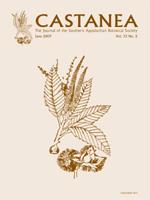To understand reproductive allocation in a common woody plant of Everglades rockland habitats, we compared vegetative and reproductive traits of Guettarda scabra (L.) Vent. (Rubiaceae), in three habitats of Long Pine Key, Everglades National Park, Florida (pineland, hammock, and hammock edge). Plants in the pineland were shorter, with smaller leaves, and allocated more resources to sexual reproduction; plants in the hammock were taller, had larger leaves, and allocated more resources to vegetative growth. Hammock-edge plants were intermediate in height, had leaves intermediate in size, but had more leaves overall than plants in pineland or hammock. Pineland and hammock-edge plants produced many more fruits than hammock plants, with pineland plants having the largest fruit-to-leaf ratio. We interpret these differences as both a response to increased competition for light in the hammock, as well as to effects of fire in the pineland, with this species displaying greatest flowering, fruiting, and reproductive success in open pineland habitat.
How to translate text using browser tools
25 July 2017
Habitat Differences in Morphology and Reproductive Allocation in Guettarda scabra (Rubiaceae)
Suzanne Koptur,
Diane Garcia
ACCESS THE FULL ARTICLE

Castanea
Vol. 82 • No. 2
September 2017
Vol. 82 • No. 2
September 2017




